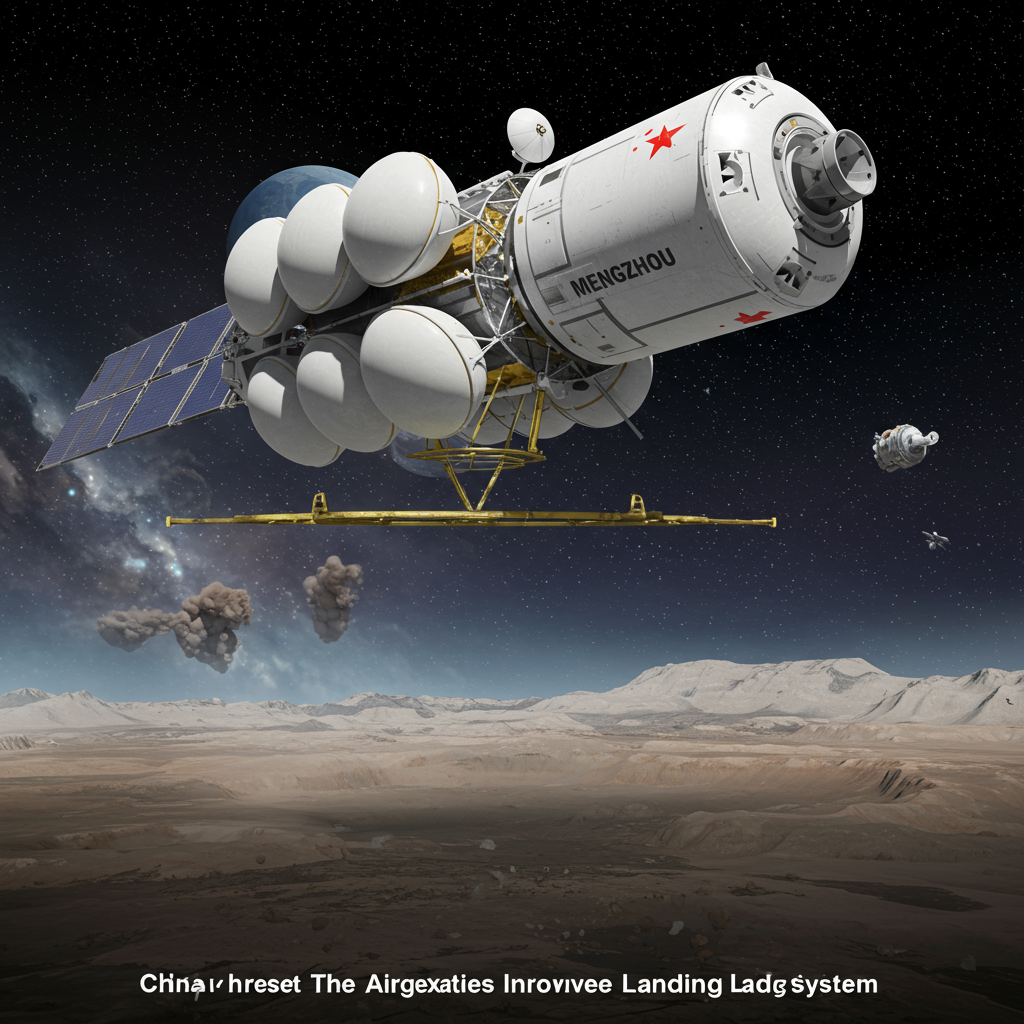China’s next-generation crewed spacecraft, officially named Mengzhou (Dream Vessel), marks a significant leap forward in the nation’s ambitious space program. Developed by the state-owned China Aerospace Science and Technology Corporation (CASC), Mengzhou is designed not only for operations with the Tiangong space station in low Earth orbit but also for future crewed missions to the moon.
This dual mission capability introduces complex challenges, particularly concerning launch procedures, operational timelines, and the compatibility of critical safety systems like the escape tower. The varying requirements for Earth orbit versus lunar voyages necessitate a highly adaptable and robust design.
A Revolutionary Landing System
One of the most notable innovations in the Mengzhou spacecraft is its novel airbag landing system. Unlike the current Shenzhou spacecraft, which relies on a retrorocket for final deceleration just before touchdown, Mengzhou jettisons its heat shield before landing and inflates multiple buffer airbags.
Developers have explained that six inflatable airbags are employed to provide a “soft landing,” significantly reducing the impact on the capsule and its occupants. This method offers several key advantages:
Reusability: The airbag system is designed with reusability in mind.
Terrain Adaptability: It allows for landings on more complex terrain compared to previous systems.
Water Buoyancy: Provides buoyancy in the event of a water landing.
Velocity Cushioning: Effectively cushions both vertical and horizontal landing velocities.
- Improved Stability: Contributes to enhanced landing stability.
- www.globaltimes.cn
- spacenews.com
- news.faharas.net
This shift to airbags represents a substantial engineering departure aimed at increasing safety and operational flexibility.
Crucial Zero-Altitude Escape Test Success
Validating these critical safety features is paramount. On June 17, 2025, China successfully conducted a demanding zero-altitude escape test for the Mengzhou spacecraft at the Jiuquan Satellite Launch Center in Northwest China’s Gansu Province.
This test simulated an emergency situation right on the launch pad, using an escape tower mounted atop the capsule, similar to the system used on the Long March-2F manned rocket. The objective was to demonstrate the escape system’s ability to rapidly separate the return capsule carrying astronauts and propel it to a safe distance for parachute deployment and a safe landing on the desert surface.
A zero-altitude test is particularly challenging due to tight timing constraints, minimal escape altitude, and stringent technical requirements. Successfully completing this test validates the performance and load capabilities necessary for the parachute system to deploy correctly in the most critical abort scenario. This recent test is only China’s second such zero-altitude validation, following a similar test for the Shenzhou spacecraft nearly three decades prior.
Powering China’s Lunar Ambitions
The development of Mengzhou is intrinsically linked to China’s goal of landing astronauts on the moon before 2030. The spacecraft is planned to launch atop the powerful new Long March 10 rocket series. The single-core Long March 10A variant will serve missions to the Tiangong space station, with its debut flight anticipated in 2026.
For lunar missions, a larger, three-core Long March 10 will be used. China’s lunar landing architecture involves two Long March 10 launches: one carrying the Mengzhou crew spacecraft and another launching the Lanyue lunar lander stack. These two components will rendezvous and dock in lunar orbit before two astronauts descend to the surface in Lanyue, while a third remains in orbit aboard Mengzhou.
The successful zero-altitude escape test and the innovative design features like the airbag landing system are vital steps in proving the safety and reliability of Mengzhou for these ambitious future missions, including the highly competitive race to return humans to the lunar surface. CASC has indicated that further tests, including a maximum dynamic pressure escape flight test, are planned as part of Mengzhou’s rigorous development and verification process.




